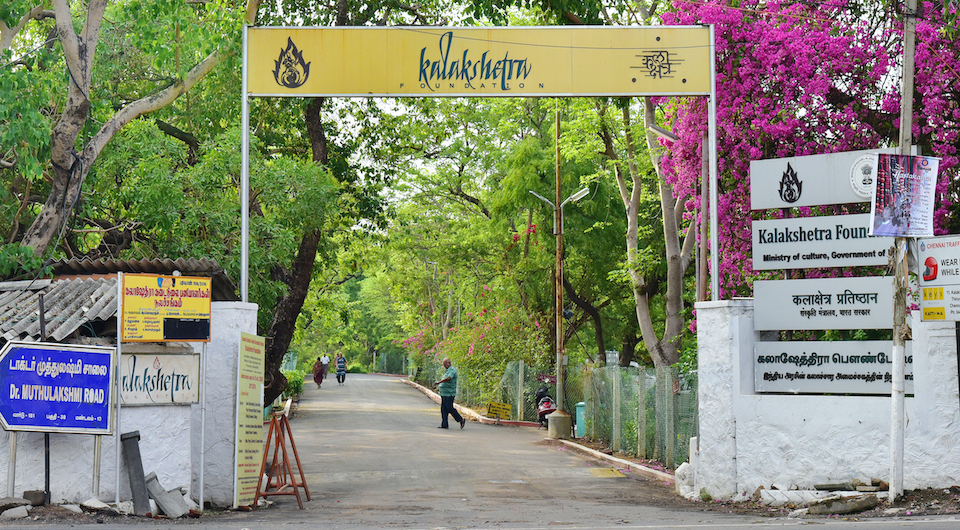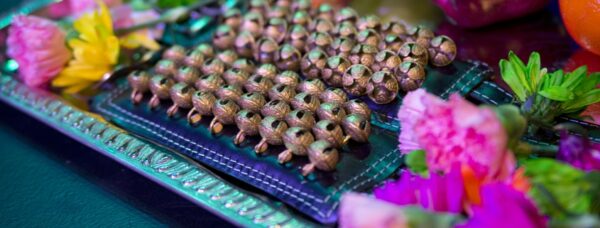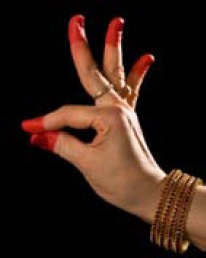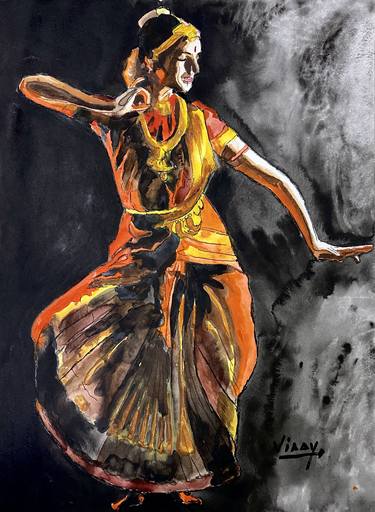About Kalakshetra Foundation
The Kalakshetra Foundation is an arts and cultural institution based in Chennai, India, that was founded in 1936 by Rukmini Devi Arundale, a prominent Indian classical dancer and choreographer. The institution is dedicated to the preservation and promotion of Indian classical dance, music, and visual arts.

The foundation offers a range of courses and programs in Indian classical dance, music, and other art forms, and has become a major center for the study and practice of Bharatanatyam and other traditional Indian dance forms. Its curriculum emphasizes the spiritual and cultural roots of Indian art and seeks to foster a deeper understanding and appreciation of these art forms.
The Kalakshetra Foundation also houses a museum and archives dedicated to Indian art and culture, as well as a theater and auditorium for performances and events. The institution has played an important role in the development and preservation of Indian classical arts, and has produced many notable dancers, musicians, and artists over the years.
Today, the Kalakshetra Foundation continues to be a vital institution for the promotion and preservation of Indian classical arts, and its legacy continues to inspire and influence generations of artists and cultural enthusiasts around the world.
About Rukmani Devi
Rukmini Devi Arundale (1904-1986) was a prominent Indian classical dancer, choreographer, and activist who is often credited with popularizing Bharatanatyam and reviving the Indian dance tradition. She was born in Madurai, India and was trained in Bharatanatyam, as well as in Western classical dance and music.

In the 1930s, Rukmini Devi Arundale founded the Kalakshetra Foundation, an arts and cultural institution based in Chennai that has since become a major center for the study and practice of Indian classical dance, music, and visual arts. Through Kalakshetra, Rukmini Devi Arundale worked to develop a modernized approach to Bharatanatyam that emphasized its spiritual and cultural roots, and helped to establish it as a respected art form both in India and abroad.
In addition to her work in dance and the arts, Rukmini Devi Arundale was also a prominent social activist and advocate for animal welfare. She was instrumental in the founding of the Animal Welfare Board of India and worked tirelessly to promote humane treatment of animals.
Rukmini Devi Arundale was widely recognized for her contributions to Indian culture and the arts, and received numerous awards and honors throughout her lifetime, including the Padma Bhushan and Padma Shri, two of India’s highest civilian honors. Her legacy continues to inspire and influence generations of dancers, artists, and cultural activists in India and around the world.
Very first Bharatanatyam Dancer…..
It is difficult to pinpoint the very first Bharatanatyam dancer, as the origins of the dance form date back centuries and it has evolved over time with various influences. However, some historians believe that Bharatanatyam has its roots in the ancient temple dance tradition of the devadasis, who were women trained in dance and music and dedicated to serving the deity in Hindu temples.
Over time, Bharatanatyam developed into a more formalized and structured dance form with specific techniques and styles. Some early pioneers of modern Bharatanatyam include Rukmini Devi Arundale, who founded the Kalakshetra Foundation in Chennai in 1936, and E. Krishna Iyer, who was instrumental in developing a system of notation for Bharatanatyam. However, many dancers and gurus have contributed to the development and preservation of Bharatanatyam over the years, and it continues to be a vibrant and evolving art form to this day.
What is Salangai Poojai ?
Salangai Pooja, also known as Salangai Puja or Ghungroo Puja, is a traditional practice in Bharatanatyam, a classical dance form of India. It is a ceremony where the dancer performs the ritual of blessing their ankle bells, known as “salangai” in Tamil, which are an essential component of the Bharatanatyam dance.

The ceremony is usually performed by the dancer in the presence of their guru, family, and friends. It involves the offering of flowers, fruits, and other symbolic items to the salangai, followed by the recitation of mantras and hymns to invoke the blessings of the divine and the dance gods.
The salangai are considered sacred in Bharatanatyam and are believed to possess the power to enhance the dancer’s performance and elevate their spiritual and artistic experience. Through the Salangai Pooja, the dancer seeks to imbue the bells with divine energy and blessings, thereby enhancing their own performance.
The ceremony also serves as a way for the dancer to express their gratitude towards their guru, who has trained and guided them in their journey of learning the dance form. It is a mark of respect and honor towards the teacher, and a way to seek their blessings for a successful performance.
Overall, the Salangai Pooja is a significant ritual in Bharatanatyam that symbolizes the importance of the ankle bells in the dance form and highlights the dancer’s reverence and devotion towards their guru and the divine.
What is Guru Pooja
In the context of Bharatanatyam, Guru Pooja holds a significant place as it is a way for the student to pay respect and offer gratitude to their dance guru who has trained and guided them in their journey of learning the dance form.
Before commencing the Bharatanatyam performance or practice session, the dancer typically performs Guru Pooja as a mark of respect and honor towards their dance teacher. The ceremony usually involves the offering of flowers, fruits, and other items, along with the recitation of hymns and mantras in praise of the guru.
The offering of flowers is done with each petal representing a quality or attribute of the guru, such as patience, knowledge, and discipline. The petals are offered along with the chanting of the guru’s name, signifying the student’s reverence and devotion towards their teacher.
Guru Pooja in Bharatanatyam is not just a ritual or ceremony, but also a way for the student to connect with their teacher at a deeper level and to seek their blessings for a successful performance or practice session. The ceremony helps to reinforce the bond between the teacher and student, which is essential in the learning and practice of this classical dance form.
Why International Dance Day?
International Dance Day is celebrated every year on April 29th to raise awareness about the importance of dance and its cultural significance around the world. The day was established by the International Dance Council (CID) in 1982 to coincide with the birthday of Jean-Georges Noverre, a French dancer and choreographer who is considered the father of modern ballet.

The purpose of International Dance Day is to promote the art of dance and its diverse forms, to celebrate the creativity and talent of dancers, and to encourage people to experience the joy of dance. The day is celebrated with a variety of events and performances, including dance workshops, festivals, and performances by professional dance companies.
International Dance Day also serves as an opportunity to address issues facing the dance community, such as the need for better working conditions for dancers, increased access to dance education, and the preservation of traditional dance forms.
Overall, International Dance Day celebrates the universal language of dance and its ability to bring people from different cultures and backgrounds together in a spirit of creativity and joy.
Mudra in Bharatanatyam…..
- Anjali: This is a gesture of folded hands that is used to express greeting, prayer, or respect.

- Tripataka: This mudra is formed by extending the three fingers of the hand while keeping the other fingers bent. It is used to convey the ideas of fire, wind, or tree.

- Ardhachandra: This mudra is formed by bending the ring finger and extending the other fingers. It is used to depict the crescent moon or to show a woman’s face.

- Hamsasya: This mudra forms a swan with the hands and is used to depict a swan or bird in flight.

- Alapadma: This mudra is formed by joining the tips of the thumb, index finger, and middle finger to create a lotus-like shape. It is used to depict flowers or to express beauty.

- Shikhara: This mudra is formed by joining the tips of the thumb, index finger, and middle finger while keeping the other fingers bent. It is used to depict a mountain or to express strength.
- Asamyukta hasta: This is a single-hand gesture that is used to depict various objects or animals, such as a deer, snake, or flower.

There are many other mudras in Bharatanatyam, each with its own specific meaning and usage. The precise and intricate use of mudras is what makes Bharatanatyam such a rich and expressive dance form.
What is the meaning of Bharatanatyam ?
The word “Bharatanatyam” is derived from three words: “Bhava” which means expression, “Raga” which means melody, and “Tala” which means rhythm. Together, they form the essence of Bharatanatyam, which is a classical dance form that originated in the southern state of Tamil Nadu in India.
Bharatanatyam is a combination of dance, music, and storytelling that uses intricate footwork, hand gestures, and facial expressions to convey emotions and tell stories from Hindu mythology and folklore. It is known for its precise and angular movements, as well as its use of intricate mudras or hand gestures that convey specific meanings and emotions.
The dance form has a rich history and is deeply rooted in Indian culture and spirituality. It was originally performed in Hindu temples as a form of worship and was later revived and popularized in the 20th century by dancers such as Rukmini Devi Arundale and Balasaraswati.
Today, Bharatanatyam is recognized as one of the most popular and influential classical dance forms in India, and it continues to evolve and adapt to contemporary contexts while staying true to its traditional roots.
Difference between Bhartanatyam and Western Dance
There are many differences between Western dance forms and Bharatanatyam, a classical dance form from India. Here are a few major differences:


- Technique: Western dance forms, such as ballet and contemporary dance, focus on fluidity and grace in movements, often emphasizing extensions and flexibility. In contrast, Bharatanatyam focuses on precise footwork, angular movements, and sharp, expressive hand gestures.
- Storytelling: Western dance forms typically do not have a strong storytelling tradition, and the movements and choreography are often abstract or interpretive. In Bharatanatyam, however, the storytelling tradition is central to the dance form, and the movements and gestures are used to convey specific stories from Hindu mythology and folklore.
- Music: Western dance forms are often performed to music that is separate from the dance, while Bharatanatyam is typically performed to Carnatic music, a classical music tradition from southern India. The music and dance are closely intertwined in Bharatanatyam, with the music often dictating the rhythm and tempo of the dance movements.
- Costumes: Western dance costumes are typically more revealing and form-fitting, while Bharatanatyam costumes are more modest and traditional. Bharatanatyam costumes consist of a saree or long skirt, blouse, and dupatta, with elaborate jewelry and makeup.
- Cultural significance: Western dance forms are often performed for entertainment or artistic expression, while Bharatanatyam is deeply rooted in Indian culture and is often performed in religious or spiritual contexts, such as in temples or at festivals.
Overall, while there may be some similarities in technique and expression between Western dance forms and Bharatanatyam, the differences in storytelling tradition, music, costumes, and cultural significance make each one unique and distinct.
